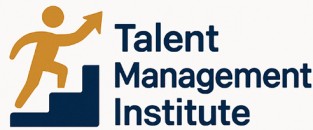
Understanding Programmatic Job Advertising
Decoding the Mechanism of Programmatic Job Advertising
In the ever-evolving landscape of recruitment, programmatic job advertising has emerged as a game-changer. This approach leverages advanced technology to automate the buying, placement, and optimization of job ads in real time. By utilizing data-driven strategies, it ensures that job ads reach the right candidates at the right time, enhancing the overall recruitment process.
Programmatic job advertising operates through sophisticated algorithms that analyze vast amounts of data to determine the best platforms and times to display job ads. This method is a departure from traditional recruitment advertising, which often relies on manual processes and static placements. Instead, programmatic advertising dynamically adjusts to market conditions and candidate behavior, optimizing ad performance and cost-efficiency.
One of the key advantages of programmatic job advertising is its ability to target specific audiences with precision. By analyzing data from various sources, such as job boards, social media, and other advertising platforms, recruiters can tailor their ads to attract top talent. This targeted approach not only improves the quality of candidates but also reduces the time and cost associated with the hiring process.
As we delve deeper into the role of data in programmatic advertising, it becomes clear that this technology is not just about automation. It's about leveraging insights to make informed decisions that enhance recruitment outcomes. For those interested in exploring the dynamics of this innovative approach, you can find more insights in the dynamics of Belvedere hiring.
The Role of Data in Programmatic Advertising
The Impact of Data Powering Job Advertising
The transformation of recruitment is heavily influenced by the data-driven approach that programmatic advertising brings to the table. This method harnesses a wealth of data to make recruitment advertising more efficient and effective. At its core, programmatic job advertising uses data to optimize real-time bidding and placements, ensuring that job ads reach potential candidates at the most opportune moments.
Data is integral in shaping these outcomes. It allows recruiters to better understand the behavior and preferences of job seekers through insights gained from various platforms. Combined with machine learning, data enables the determination of the best advertising channels, and even specific time slots, to engage top talent in the market.
Additionally, programmatic recruitment relies on sophisticated algorithms that evaluate past performance and forecast future outcomes. This predictive analysis helps in making informed decisions that can minimize the cost of advertising while maximizing reach and performance. Recruitment advertising platforms analyze candidates' responses, ensuring that ads are continuously optimized for better results.
Exploring the dynamics of belvedere hiring can provide a deep dive into how data has reshaped job advertising, offering an ultimate guide to understanding and harnessing the capabilities of data-driven recruitment. By leveraging the right recruiting tools, organizations can refine their talent acquisition strategy and maintain a competitive edge.
Benefits of Programmatic Job Advertising for Talent Management
The Advantages of Programmatic Job Advertising for Talent Acquisition
Programmatic job advertising is revolutionizing the recruitment landscape by offering a data-driven approach to acquiring top talent. Through this advanced method, talent acquisition teams can leverage the best software and platforms to increase the efficiency and effectiveness of their recruitment marketing strategies.- Data-Driven Precision: By harnessing the power of data, programmatic job advertising ensures that job ads are displayed to the most relevant candidates, enhancing the performance of recruitment advertising. Algorithms analyze candidates' profiles and behaviors across job boards and social media, allowing recruiters to target their ads with precision.
- Real-Time Optimization: The use of machine learning in programmatic advertising platforms allows for real-time bidding and adjustments, ensuring that ads reach job seekers at the right time and place. This technology continuously refines targeting strategies based on the performance data gathered, optimizing the recruitment process.
- Cost Efficiency: Programmatic recruitment provides a cost-effective solution by automating the ad buying process and reducing wasted spend on ineffective ads. By focusing efforts on high-performing platforms and narrowing the target audience, companies can achieve better recruitment results at a lower cost.
- Expanded Reach: Using an array of advertising tools, programmatic job advertising broadens the scope of recruitment efforts. This means reaching passive candidates who may not be actively looking but are open to job opportunities when presented through the right channels.
- Enhanced Candidate Experience: A seamless and targeted recruitment advertising journey not only attracts top talent but also improves the candidate experience. By providing relevant job opportunities, candidates are more likely to engage positively with the hiring process.
Challenges in Implementing Programmatic Job Advertising
Overcoming the Hurdles of Programmatic Job Advertising
The journey into programmatic job advertising isn't devoid of obstacles. Despite its promise of efficiency and precision, implementing this innovative recruitment marketing strategy can present formidable challenges.
Integration Complexities
At the forefront, integrating programmatic software with existing recruiting systems may pose a major challenge. Recruiting platforms and job boards must seamlessly align with the chosen advertising platform to effectively harness real-time bidding capabilities. Ensuring a smooth integration demands comprehensive understanding of both the cutting-edge technology and the specific needs of your talent acquisition process.
Data-Driven Decisions
Another significant hurdle is the reliance on data-driven insights. While data brings value, accessing and interpreting large pools of recruitment advertising data requires sophisticated analytical tools and expertise. Talent management teams must be equipped with tools that not only gather data but also provide actionable insights. The goal is to optimize programmatic recruitment strategies to target the best candidates without escalating costs.
Fostering Organizational Buy-In
Adopting new technology often meets with resistance. Convincing stakeholders of the long-term benefits of programmatic job ads requires clear communication of its effectiveness in enhancing recruitment. Programmatic advertising platforms offer a compelling advantage by saving time and increasing the scope of targeted outreach. Success depends on managing expectations and demonstrating improved talent acquisition performance.
Cost Considerations
Cost is another barrier. Although programmatic job advertising can be cost-efficient by cutting down on wasted spend, the initial investment in new technology and training can be substantial. Organizations must evaluate the trade-off between short-term expenses and long-term gains, ensuring that they allocate resources wisely to maximize recruiting potential.
Navigating these challenges requires strategic planning and a clear understanding of programmatic advertising's fundamentals. The journey may be complex, but with the right approach, organizations can tap into new opportunities to attract top talent and refine their hiring process. Such steps lead forward to transforming traditional recruitment into a more sophisticated, data-driven undertaking, ultimately driving improved recruitment outcomes and organizational growth.
Case Studies: Success Stories in Programmatic Job Advertising
Real-World Applications and Success Cases
Programmatic job advertising has made significant strides in recruitment advertising by leveraging data-driven approaches for enhanced performance. Let's explore some success stories that highlight the strategic use of programmatic recruitment.1. Optimizing Recruitment with Real-Time Bidding
Companies like leading job advertising platforms have utilized real-time bidding to gain an edge in recruitment marketing. By automatically adjusting bids based on performance indicators, these platforms enhance the cost-effectiveness of recruitment advertising. This process not only minimizes expenses but also ensures job ads reach top talent effectively.2. Leveraging Data-Driven Insights for Better Candidate Matching
Programmatic tools that harness data insights have empowered recruitment teams to match job seekers with roles that closely align with their qualifications and interests. Software solutions offering precise data analytics facilitate better talent acquisition, which is pivotal when aiming to fill CLS-designated roles.3. Integrating Social Media for Broader Talent Reach
Employers have strategically integrated programmatic advertising with social media platforms, broadening their reach to connect with potential candidates. This synergy allows for the creation of precise, targeted job ads that resonate with specific candidate profiles, further improving recruitment advertising outcomes.4. Enhancing Advertisement Personalization Using Machine Learning
Programmatic advertising's use of machine learning algorithms enables personalized job ads that enhance the candidate experience. This personalization ensures that job seekers receive tailored content, increasing the likelihood of attracting high-quality applicants. Through these applications, companies can see transformative changes in their recruiting processes. As programmatic job advertising evolves, it continues to be an ultimate guide in the competitive pursuit of talent in the digital age. As new challenges emerge, the efficiency of programmatic recruitment will be vital in maintaining a cost-effective and top-tier hiring strategy.Future Trends in Programmatic Job Advertising
Exploring Future Pathways in Recruitment Marketing
The realm of programmatic job advertising is rapidly evolving, presenting new opportunities for innovation and efficiency in recruitment marketing. As companies increasingly embrace data-driven strategies to optimize their hiring processes, it's important to look into what the future holds.- Integration of Advanced AI and Machine Learning: The use of AI and machine learning in programmatic recruitment continues to grow, offering sophisticated analysis of job ads and candidate behaviors. These technologies enable more precise targeting, ensuring that job ads reach the most relevant candidates at the right time, significantly enhancing recruiting efficiency.
- Enhanced Personalization: Future programmatic advertising will likely focus even more on personalizing job ads to align with individual candidate preferences and behaviors. This shift aims to improve candidate engagement and ultimately lead to better recruitment advertising outcomes.
- Expansion of Advertising Platforms: While social media platforms are already gaining traction, their role will further expand in the context of recruitment advertising. Companies will continue to leverage a diverse array of advertising platforms, tapping into larger pools of top talent in real time.
- Cost Optimization: As more organizations adopt programmatic job advertising, the need for cost-effective recruitment solutions becomes crucial. Advanced bidding strategies and real-time analysis will further optimize budget allocations and maximize returns on investment.
- Data-Driven Decision Making: The role of data in recruitment advertising is set to grow more significant as platforms refine their analytics capabilities. This will allow recruiters to fine-tune strategies and make informed decisions, reducing the risk of investment missteps.













